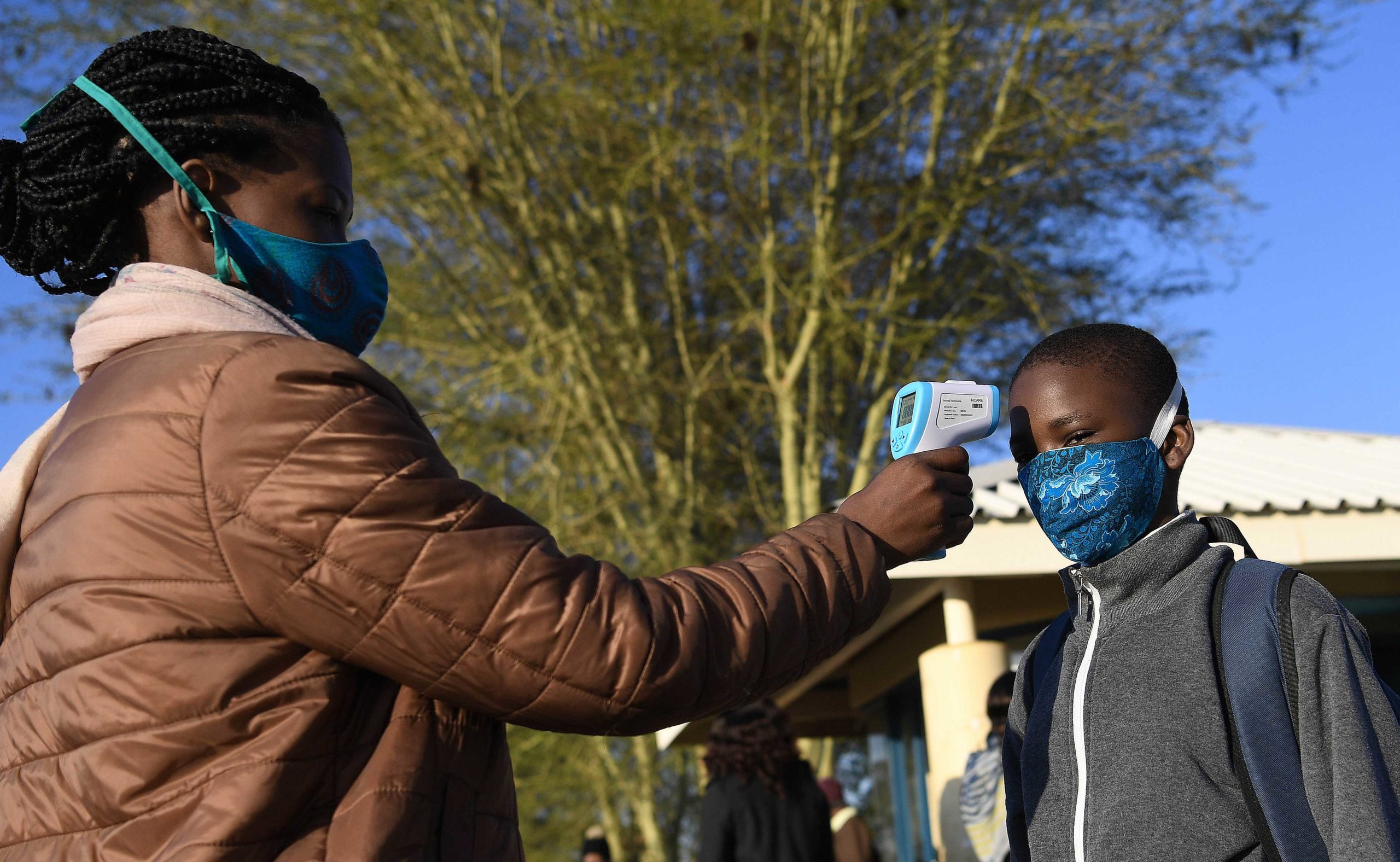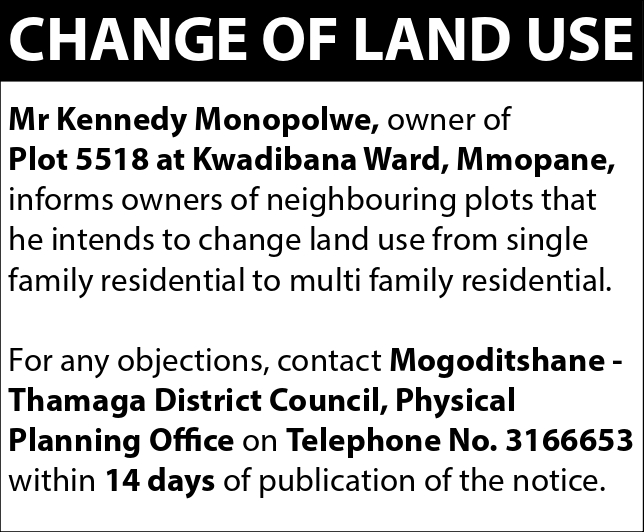- S&P downgraded Botswana in March 2010
- Moody’s further changes ratings outlook to negative 3 months later
- COVID-19 worsens diamond prospects
- Both agencies foresee a gradual drain on foreign reserves
KEABETSWE NEWEL
Just three months after credit rating agency, S&P Global, downgraded Botswana’s long-term sovereign credit ratings, another agency, Moody’s, has changed the outlook further, from stable to negative, of Botswana’s ‘A2’ rating for long-term bonds denominated in both domestic and foreign currency, fearing a further downgrade.
In March, S&P downgraded the country’s sovereign credit rating for long-term foreign and domestic currency bonds from “A-” to “BBB+” and retained “A-2” for short-term foreign and domestic currency bonds. The downgrade was as a result of declining foreign reserves and weakening diamond prospects, which analysts feared could spike skepticism among investors and financiers.
Three months later, Moody’s Investors Service (Moody’s), in the latest out-of-calendar review of the credit ratings, affirmed Botswana’s rating of ‘A2’ for long-term bonds denominated in both domestic and foreign currency. Sadly, Moody’s changed the outlook from stable to negative. This is the same outlook that S&P had pronounced stable only three months ago.
According to Moody’s, this update to the recent March 2020 rating, on a date that deviates from the previously published sovereign release calendar, is prompted by risks associated with COVID-19 shocks, given Botswana’s strong dependency on the diamond industry for growth, exports and budget revenues.
This week, Paul Rowley, De Beers Executive Vice President-Diamond Trading, said following a positive start to the year, the global impact of COVID-19 and subsequent restrictions on the movement of both people and goods had a major impact on wholesale demand for both rough and polished diamonds, as well as consumer demand for diamond jewellery.
“While lockdowns are now beginning to ease in some countries, a return to ‘normal’ activity appears some way off, other countries have yet to see a peak, and concerns of further waves of infection persist,” he observed, adding that the closure of De Beers stores globally would dwindle revenue.
Diamonds continue to be the number one revenue earner for Botswana, contributing around 80 percent of export revenues.
In April, De Beers disclosed that the outbreak of COVID-19 had affected its rough sales for February, which plunged by 36 percent from January. Moody’s said the revision of Botswana’s outlook from stable to negative reflected the increasing risks of lower growth, higher budget deficits and a likely resultant increase in government borrowing. In their assessment, Moody’s observed that these adverse effects of COVID-19, combined with the current challenges the government faces on fiscal consolidation, could mean further deterioration of fiscal metrics to a level not consistent with the ‘A2’ sovereign credit rating.
Further, Moody’s cautioned that the ratings could be revised downwards on account of challenges encountered in halting the fiscal deterioration associated with the pandemic, suggesting a durable deterioration of fiscal strength. Similarly, Moody’s cautioned that a material weakening of the fiscal metrics, as a result of either an increase in financial support to state-owned enterprises, larger gross borrowing requirements or a further deterioration of the external position beyond current forecasts, would increase the likelihood of a downgrade.
However, Moody’s overall assessment is that the country’s economic fundamentals, economic strength, debt profile, institutions and governance strength, have not materially changed since the last rating, hence the affirmation of the ‘A2’ credit rating for Botswana.
The two agencies – S&P Global and Moody’s – coincide in that weakening ratings are undermined by the prolonged weakening of the external market for diamonds, pressures on expenditure due to the increase in public sector wages and the resultant expected gradual decline of the country’s strong fiscal and external buffers in the near to medium-term. They expect that the country will run twin deficits (fiscal and balance of payments) over the next few years, resulting in a gradual draining of the country’s traditionally strong savings.
As at March 2020, Botswana’s foreign exchange reserves amounted to P62 billion. The savings are on a gradual decline as feared by the credit rating agencies. In November 2019, the foreign reserves had a balance of P70.6 billion, which was also a decrease from P74.5 billion in November 2018.
The ratings could further be revised downwards on account of the prolonged weak demand and prices for diamonds, and increase in government spending that will lead to a deterioration of the country’s fiscal and external balances. At De Beers, Rowley noted that demand from the USA, China and India – the three top consumers of Botswana diamonds – remains weak, which will affect earnings.
S&P long warned that Botswana faced a “deteriorating outlook” in 2017, a move that suggested then that a dreadful downgrade from A-/A-2 sovereign credit rating could be on the horizon.
That notwithstanding, an official at the Ministry of Finance and Development Planning expressed confidence that Botswana would recover along with the global environment. “We just need to improve our budget deficit by diversifying products of the economy, which results in increased revenue streams,” the official said.
But beneficiation – a process by which Botswana extracts more value from each diamond mined in its territory as well as diamonds mined elsewhere in the De Beers empire – has not helped diversify economy. More than four De Beers-accredited diamond polishers have closed down due to poor cash flows, suggesting failure of beneficiation as a solution to Botswana’s economic diversification.
Weighing in on the matter, analysts interviewed by The Botswana Gazette said investors – anxious about the direction of the minerals-led economy – would lose confidence in Botswana’s potential to bounce back. Another analyst added that a downgrade may impact the ability of the country to borrow from domestic and international institutions such as the World Bank and International Monetary Fund (IMF).
“We will be viewed differently by the lenders,” Ishmael Radikoko, finance lecturer at the University of Botswana (UB), noted in a previous engagement. Radikoko said rating agencies could be concerned about the vulnerabilities presented by reliance on mining and negative sentiments presented by the Southern African Customs Union (SACU) receipts from the Common Revenue Pool (CRP).
The SACU Common Revenue Pool increased from R79.2 billion in the 2016/17 financial year to R99.6 billion in 2017/18. Botswana’s share increased from P11.7 billion in 2016/17 to P17.8 billion for the period under review.
Meanwhile, at Motswedi Securities, Head of Research, Garry Juma, worries that current global economic challenges resulting from the Coronavirus will result in reduced imports and global trade, which will dwindle SACU receipts.
Further, the SACU Secretariat’s Paulina Mbala Elago warned that global economic growth will be subdued and that SACU trading partners will also experience a slowdown in total trade. She said the trade could also affect the revenue pool in the negative, which means that Botswana will probably get a smaller share out the SACU CRP, consequently diminishing state revenues.
SACU receipts account for over 25 percent of state revenues, which means reduced receipts increase the vulnerability of Botswana’s fiscal position. Juma said it would affect the cost of credit that Botswana will incur in assessing external debt for project funding.
An analyst at Investec said a downgrade would “increase our cost of sovereign debt” and spike interest rates. Government and government-guaranteed debt for the 2018/19 fiscal year is projected at P46 billion, which analysts say gradually decreases Botswana fiscal standing and credit rating.
According to Bank of Botswana (BoB), government and government-guaranteed debt for the 2018/19 fiscal year is projected at P46 billion, of which P36.1 billion is government’s own debt, the balance being government-guaranteed debt.
Total external debt amounts to P30.5 billion or 15.4 percent of GDP, while domestic debt, at 7.8 percent of GDP, amounts to P15.5 billion. Overall, total projected debt as at March 31, 2019 is equivalent to 23.2 percent of forecast GDP and below the statutory ceiling of 40 percent of GDP, with both domestic and external debt being lower than the 20 percent of GDP limit for each category.
The debt is expected to increase as a result of consecutive deficits. S&P believes that the deficits will eat into Botswana’s national savings and increase domestic and external debt.




